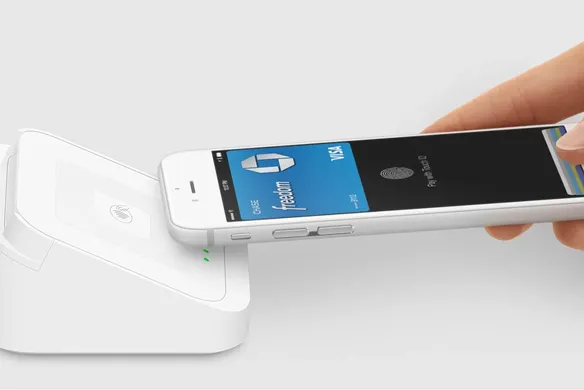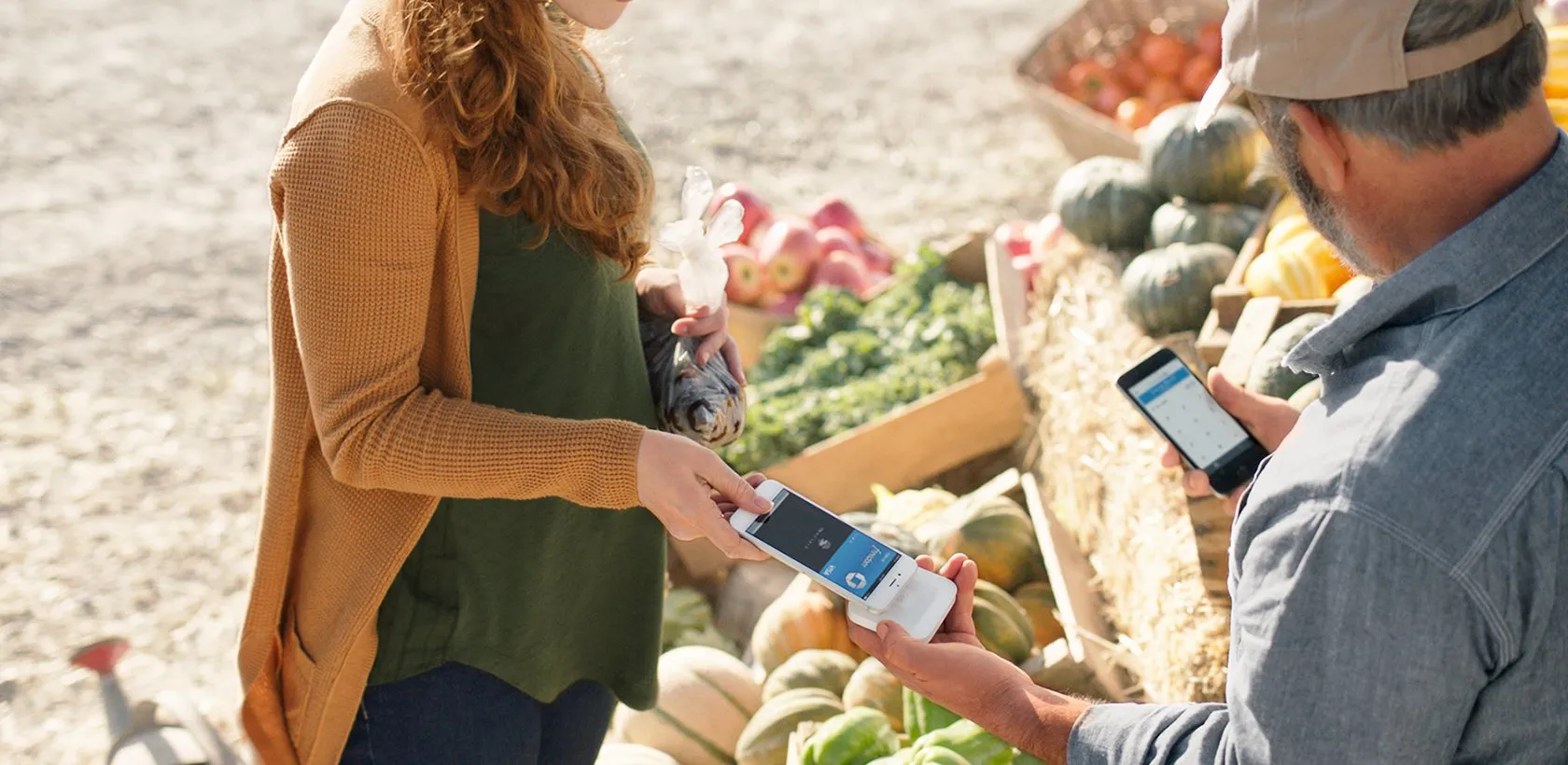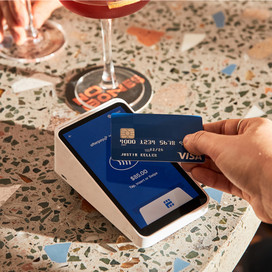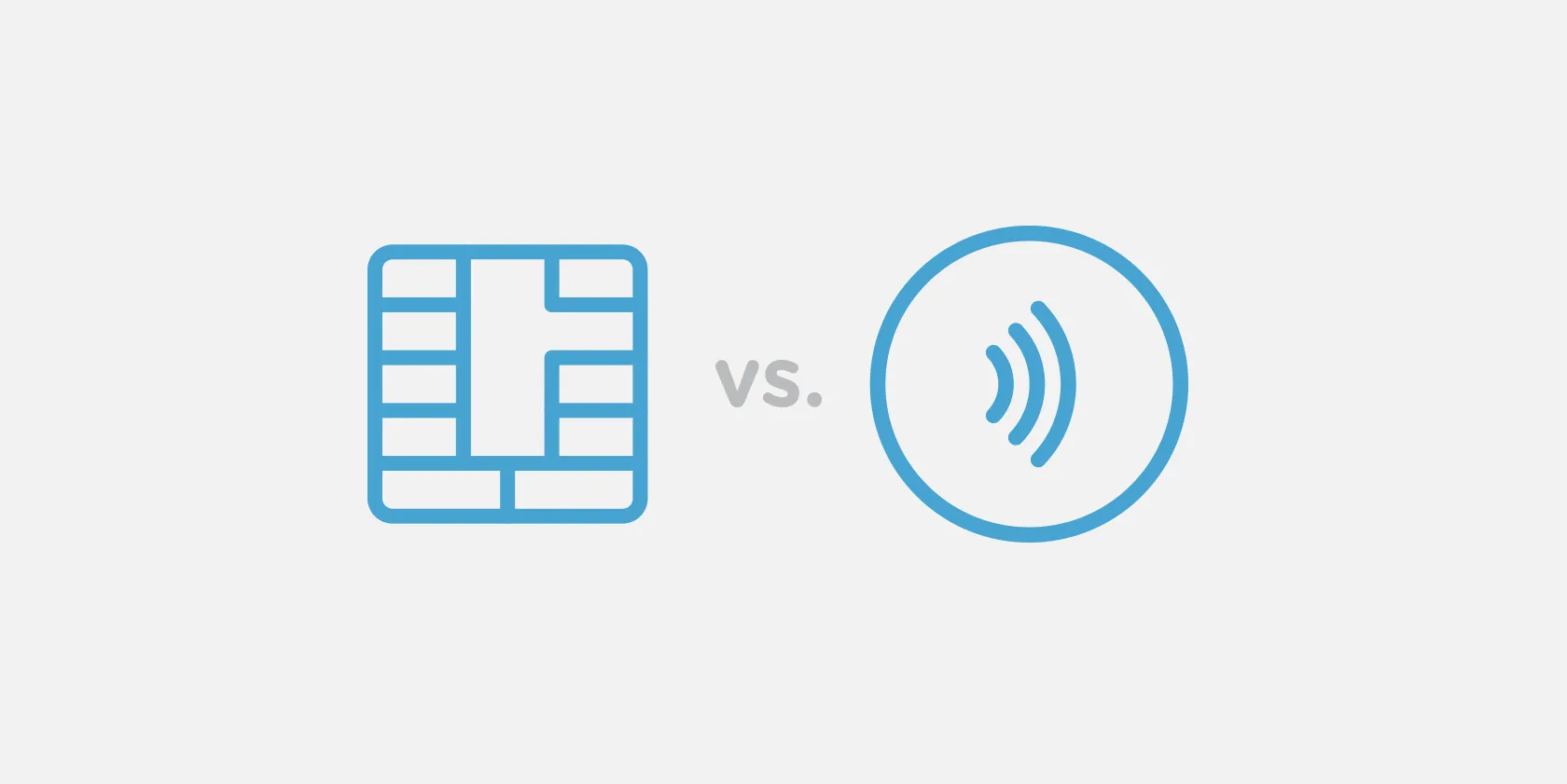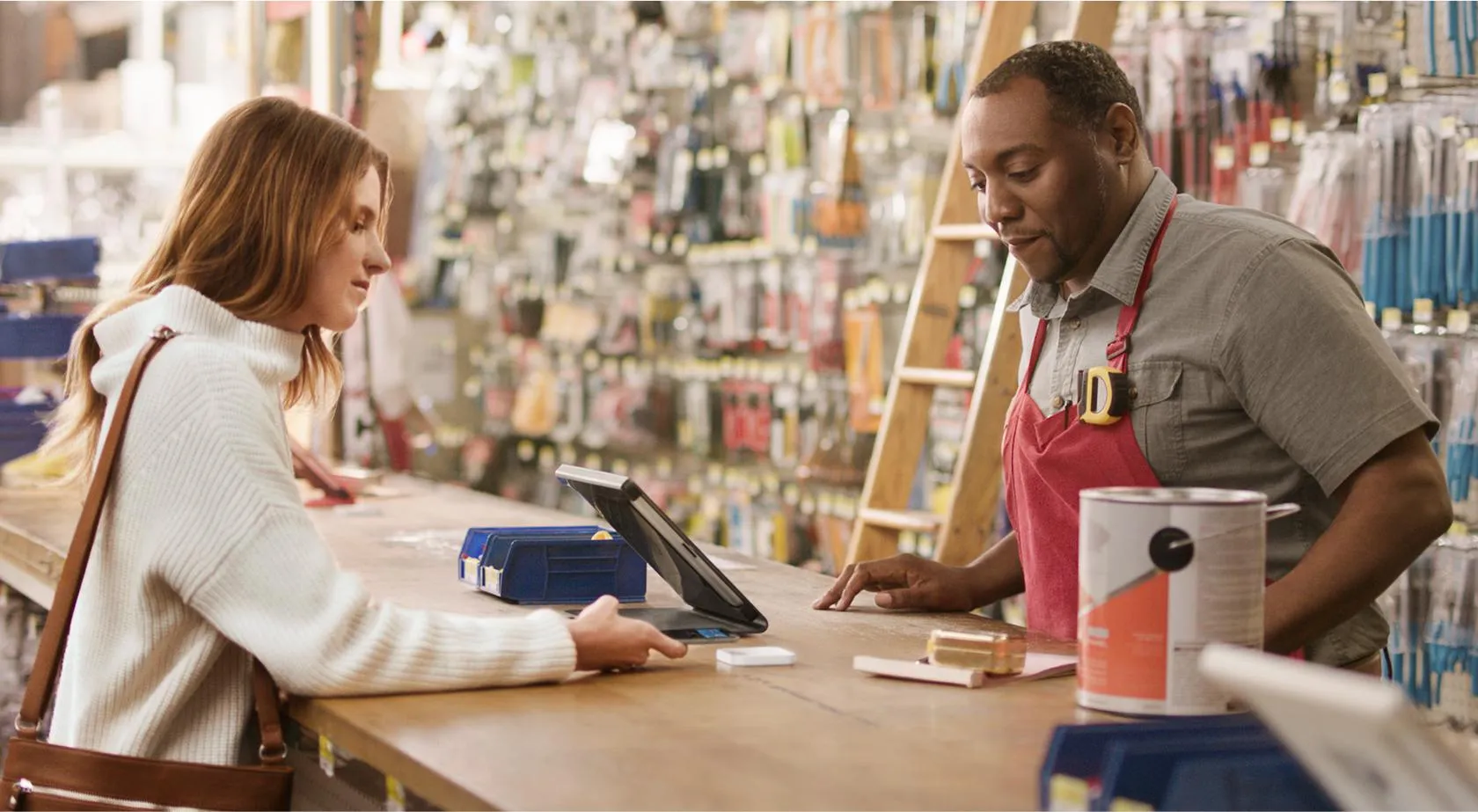Intro
Intro to NFC
From email to personal banking to health apps, we’re increasingly using our mobile devices to help us manage our day-to-day lives. So it’s no surprise that NFC mobile payments — paying for stuff via your smartphone — are picking up steam. Soon, more and more of your customers will want to pay with their devices. So to make sure you’re ready to ride the wave of this growing trend, here’s our guide to NFC and how to accept it at your business.
FAQ
Five Frequently Asked Questions About NFC
What is NFC?
NFC (near field communication) is the technology that allows two devices — like your phone and a payments terminal — to talk to each other when they’re close together. NFC is the technology that enables contactless tap and go payments.
What are some examples of NFC mobile payments?
The buzziest are Apple Pay, Google Pay and Samsung Pay.
How do I accept NFC?
You’ll need to get a new NFC-enabled payments reader that can accept contactless payments. The Square Reader accepts contactless tap and go, mobile and chip and PIN payments via Visa, Mastercard, eftpos, American Express and JCB.
Are NFC point-of-sale systems expensive?
Not necessarily. Square Reader is just $65 and works with Square’s free point-of-sale app.
Is NFC secure?
NFC mobile payments are dynamically encrypted, making them one of the most secure ways to pay.
Deep Dive
How does NFC work?
NFC (near field communication) is what enables two devices to communicate wirelessly when they’re close together. NFC is actually a subset of something called RFID (radio-frequency identification), a technology that allows us to identify things through radio waves. RFID is nothing new — it’s been used for decades for things like scanning items in shops, luggage on baggage claims and tagging cattle.
NFC, which was introduced in the early 2000s, uses a specific RFID frequency (13.56MHz, to be exact) for close-range communications. To date, one of the more common uses for NFC is identification cards to gain access to places like office buildings and private garages. But increasingly, NFC is being used to power something called “contactless” payments.
If you’ve stood in line at any business recently, you’ve probably already seen a contactless payment in action. A contactless payment is a transaction that requires no physical contact between a device (aka a smartphone) and a payments terminal. Meaning, people can just hold up their mobile devices or contactless cards to pay.
In an NFC payment, you hold your device to a reader to pay.
NFC is the technology that’s at play here—it’s the way the mobile device and the NFC-enabled point-of-sale system talk back and forth to each other to process a payment. The devices do have to be close, though (that’s where the “near” part of near field communication comes in). For a contactless payment to go off seamlessly, you usually have to hold your phone two inches or less from the eftpos machine.
When a contactless payment is initiated (by a customer holding or tapping a mobile device to the payments terminal), the NFC technology goes to work. Using that specific frequency we talked about, the NFC-enabled reader and the smartphone pass encrypted information back and forth to each other to complete the payment. This all takes just seconds. Speed, in fact, is one of the coolest parts of NFC payments. They take a fraction of the time of magstripe and chip card transactions — and are leagues faster than cash.
Is NFC secure?
The idea of paying through a mobile device can make some people uneasy, especially because we’re so accustomed to keeping our wallets close to the vest (so to speak). But NFC payments are extremely secure.
As opposed to the data on a card (which is static—it’s all right there on the back of your card), the data involved in an NFC transaction is encrypted and dynamic, meaning it’s constantly changing. As an example, let’s take Apple Pay, which uses a technology called tokenization to safeguard bank details.
Here’s how it works: After you take a picture of your credit card and load it into your iPhone, Apple sends the details to your card’s issuing bank or network. The banks and networks then replace your bank details with a series of randomly generated numbers (the token). That random number is sent back to Apple, which then programs it into your phone. This means that the account details on your phone can’t be cloned into anything valuable to fraudsters.
NFC payments are encrypted and secure.
What’s more, Apple Pay is protected by Touch ID, Apple’s fingerprint technology. To initiate an Apple Pay transaction, you have to unlock your phone via your fingerprint. So even if your device is stolen, no one would be able to get at your data. (This is the reason why Apple Pay only works on the most recent iPhone models, which come equipped with Touch ID.)
EMV and NFC: what’s the difference?
You may hear EMV and NFC lumped together in discussions. That’s because they both represent the next wave of more secure, authenticated payments (since they’re both encrypted to protect against counterfeiting). However, EMV and NFC are different technologies.
Near field communication (NFC) is associated with mobile contactless payments like Apple Pay. EMV® — developed and managed by American Express, Discover, JCB, Mastercard, UnionPay and Visa — is associated with chip and PIN card payments.
It isn’t a matter of one or the other, though, so long as your business is equipped with a suitable POS and reader you can take all payment methods your customers wish to use.
Both EMV and NFC are ‘authenticated’ payments.
Why should I accept NFC?
NFC-enabled payments are the future for three key reasons: they’re secure, fast and convenient. Let’s dive a little deeper.
More secure
Mobile wallets like Apple Pay tokenize your bank details, meaning they scramble them up into something that’s unintelligible (and thus unusable) for fraudsters. What’s more, these tokens change every time an NFC transaction goes down—so the data is near impossible to isolate and extract. NFC payments like Apple Pay are also locked down by the fingerprint technology built into the iPhone (you initiate an Apple Pay payment with Touch ID). Fraudsters may be tricky, but they can’t replicate your fingerprint.
Faster
Most people in Asutralia now have chip or contactless cards as standard. Which is a good thing, because they’re a lot more secure than magnetic-stripe cards. But what many people don’t realise about chip cards is that EMV transactions are actually pretty slow to process. What’s happening during an EMV transaction is that the chip in the card is talking with the processor to make sure everything checks out – great for security, but time-consuming you and your queue of customers.
NFC is the fastest way to pay—transactions take just seconds.
NFC transactions are much faster than EMV transactions—they take just seconds. And as people have started to realise that contactless is the faster, easier alternative to chip and PIN cards, they’ve adopted the tap and go way of life.
The speed of NFC transactions is a huge plus for businesses. After all, faster transactions mean less customers waiting in line.
More convenient
We’re getting used to doing everything on our phones. The fact that more and more people now have their phones at the ready makes NFC-enabled contactless payments the most convenient way to pay. No more fishing for wallets or fumbling with cash.
How do you pay with NFC?
As a business owner, it’s worth familiarising yourself with how to pay with NFC as a customer. For one, it’s always a good idea to be up to speed on where the payments industry is headed. And second, it’ll help you troubleshoot any issues your customers might have when they go to pay with their device. Getting yourself set up to pay via your phone is relatively easy if your bank has enabled it. Most mobile wallets use your phone’s camera to read the numbers on your credit card (which, as we mentioned above, become encrypted).
How do you accept NFC?
To accept NFC mobile payments at your business, you’ll need to get set up with an NFC-enabled reader. But this doesn’t have to cost you an arm and a leg. The Square Reader accepts both EMV and NFC payments and is just $65.
![]()

